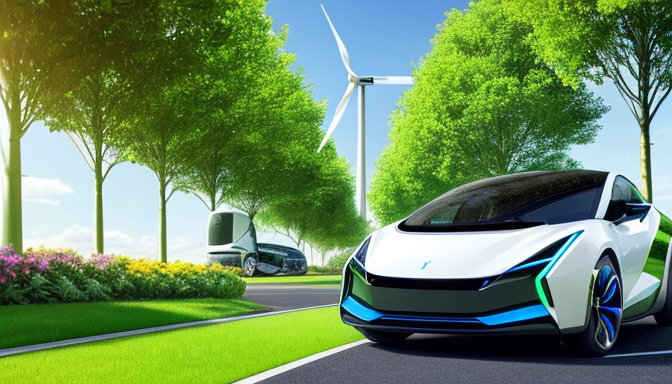The future of driving is not just a distant vision; it’s unfolding right before our eyes! Imagine a world where your car can drive itself, navigate through traffic, and even park without your help. Technological advancements are paving the way for a driving experience that was once only seen in sci-fi movies. From AI-driven systems to smart features that learn your preferences, the automotive landscape is transforming rapidly. But what does this mean for you?
One of the most exciting innovations is the rise of autonomous vehicles. These cars are equipped with sophisticated sensors and algorithms that allow them to interpret their surroundings and make decisions in real-time. Think of it as having a personal chauffeur who never gets tired or distracted! Alongside this, electric engines are becoming the norm, drastically reducing our carbon footprint and making driving more sustainable.
Moreover, the integration of smart features is revolutionizing how we interact with our vehicles. Imagine your car reminding you of your appointments, suggesting the best routes based on traffic conditions, or even adjusting its settings to match your mood. This level of personalization is not just convenient; it’s becoming an expectation.
As we embrace these changes, it’s crucial to stay informed about how they will reshape our driving habits. With the combination of cutting-edge technology and a focus on sustainability, the future of driving is not just about getting from point A to B; it’s about enhancing our overall experience while being kind to our planet.
Technological Innovations in Automotive Design
Have you ever wondered what the future holds for driving? Buckle up, because the latest technological innovations are here to take us on a thrilling ride! Imagine cars that can practically drive themselves, thanks to AI-driven systems that analyze road conditions and make split-second decisions. These advancements not only enhance our driving experience but also promise to make our roads safer. With features like adaptive cruise control and lane-keeping assistance, your car is becoming more like a trusted co-pilot rather than just a machine.
But that’s not all! The emergence of smart features is transforming how we interact with our vehicles. Think of your car as a smartphone on wheels. With integrated connectivity, you can control everything from navigation to entertainment with just your voice or a simple tap on your screen. This seamless integration creates an ecosystem where your vehicle becomes an extension of your digital life.
Moreover, let’s not forget about the futuristic concepts that are currently in the pipeline. Picture cars that can communicate with each other, sharing vital information about traffic conditions and potential hazards. This vehicle-to-vehicle communication could revolutionize how we think about road safety and traffic management.
In summary, the future of automotive design is not just about sleek aesthetics; it’s about innovation that prioritizes safety, efficiency, and connectivity. As these technologies continue to evolve, we can expect to see a driving experience that is not only smarter but also more enjoyable.

The Impact of Environmental Sustainability
As we zoom into the future, the automotive industry is taking a sharp turn towards environmental sustainability. With climate change knocking at our doors, it’s no longer just about getting from point A to point B; it’s about how we get there. Imagine a world where your car not only drives you but also contributes to a healthier planet. Sounds dreamy, right? Well, that dream is becoming a reality!
Manufacturers are now investing heavily in eco-friendly materials and energy-efficient vehicles. This shift is not just a trend; it’s a necessity. For instance, many car companies are exploring the use of recycled plastics and sustainable fabrics in their designs. This means that your next vehicle could be made from materials that were once considered waste, effectively reducing the carbon footprint. Isn’t that a cool thought?
Moreover, as we embrace electric vehicles (EVs), the impact extends beyond the car itself. Charging stations powered by renewable energy sources are popping up everywhere, making it easier for drivers to make the switch. Smart features in these vehicles, like AI driving systems, are designed to optimize energy consumption, further enhancing efficiency. Here’s a quick look at how sustainability is reshaping the automotive landscape:
| Aspect | Impact |
|---|---|
| Materials | Use of recycled and sustainable materials |
| Energy | Shift to electric and renewable energy sources |
| Technology | Integration of AI and smart features for efficiency |
In conclusion, the future of driving is not just about speed or luxury; it’s about responsibility. As consumers, we have the power to influence this transformation. So, the next time you think about buying a car, consider its environmental impact. Are you ready to drive towards a greener future?
Frequently Asked Questions
- What are autonomous vehicles?
Autonomous vehicles, often called self-driving cars, are equipped with advanced technologies that allow them to navigate and operate without human intervention. Imagine a car that can take you to your destination while you relax and enjoy your favorite playlist!
- How do electric engines impact driving?
Electric engines are a game changer! They reduce reliance on fossil fuels, lower emissions, and can even save you money on fuel costs. Think of it as trading in your gas guzzler for a quiet, efficient ride that’s kinder to the planet.
- What role does sustainability play in future driving?
Sustainability is at the forefront of the automotive industry’s evolution. With increasing climate concerns, manufacturers are focusing on eco-friendly materials and energy-efficient vehicles. It’s like giving Mother Earth a much-needed hug while you drive!
- Will driving habits change in the future?
Absolutely! As technology advances and environmental awareness grows, we’ll likely see shifts in how we view transportation. Picture this: a future where car-sharing and public transport become the norm, making our cities cleaner and more connected.